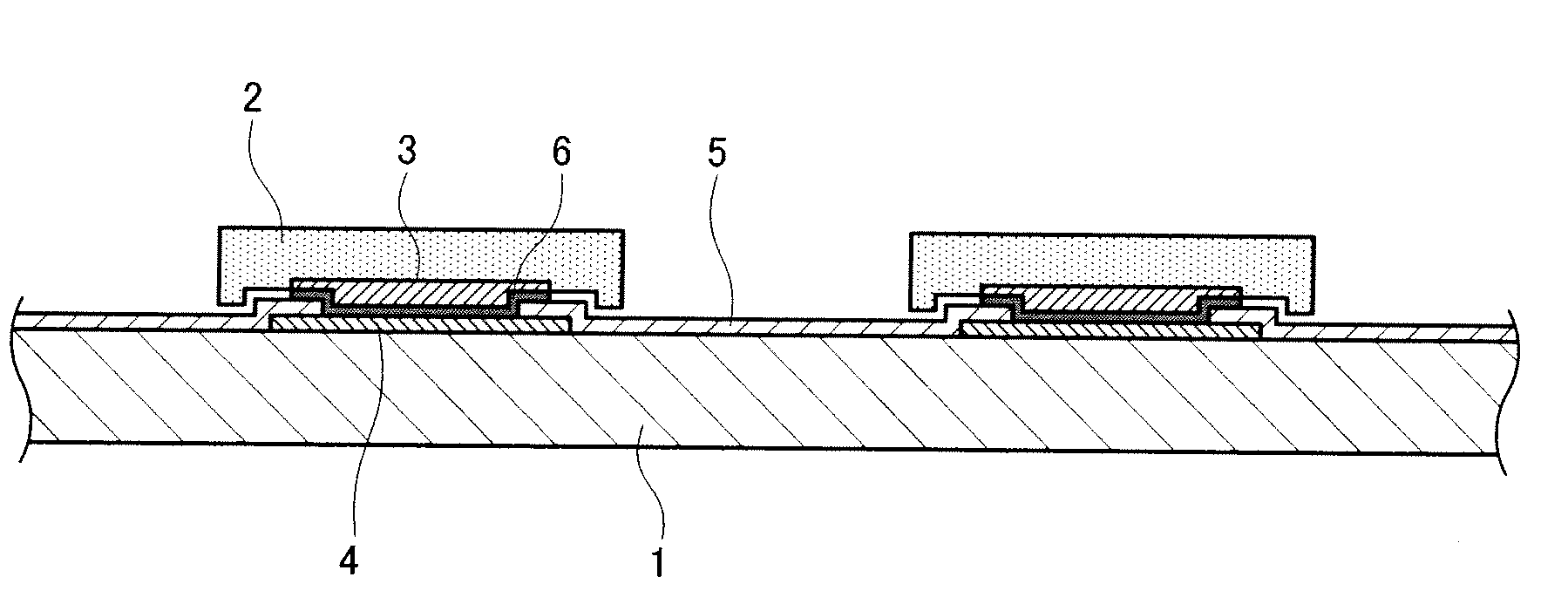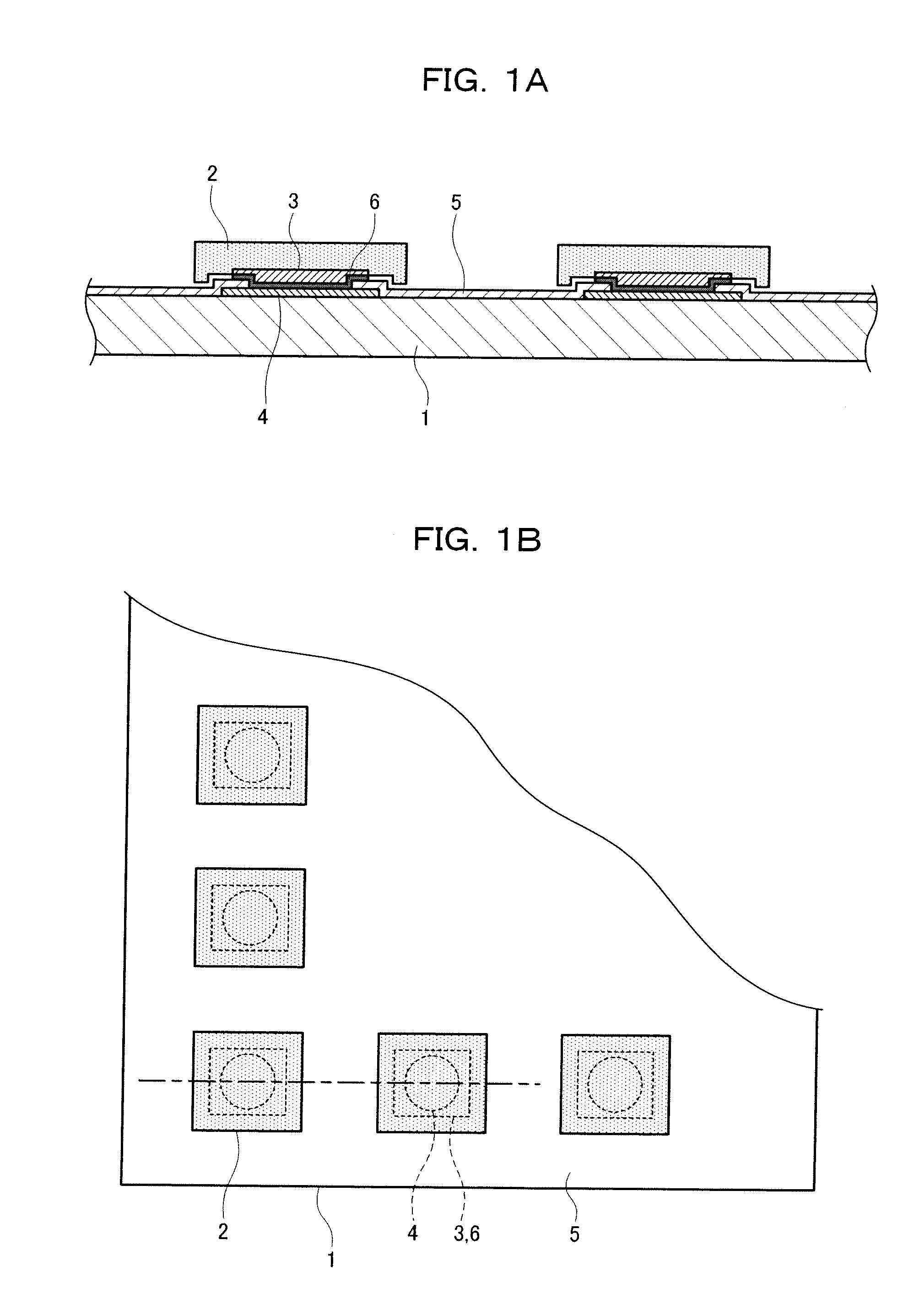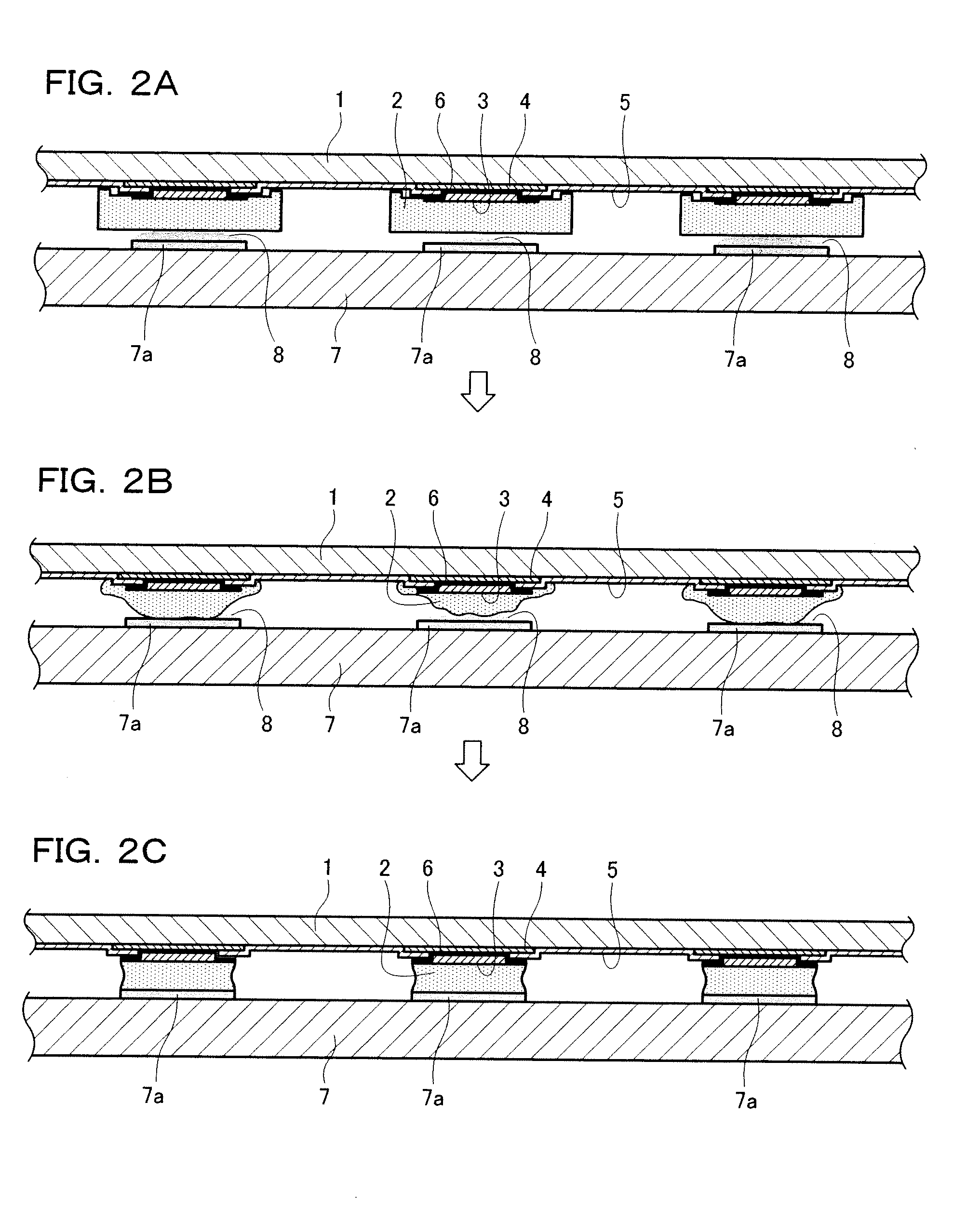Semiconductor device and method of manufacturing the same
a semiconductor and device technology, applied in semiconductor devices, semiconductor/solid-state device details, electrical apparatus, etc., can solve the problems of defective soldering, heat is not sufficiently transferred to the solder bumps separated from the soldering is difficult to print on the receiving land of the mounting board, so as to suppress defective soldering during reflowing and improve the cleaning characteristics of flux cleaning. , the effect of defective soldering in a narrow array pitch during
- Summary
- Abstract
- Description
- Claims
- Application Information
AI Technical Summary
Benefits of technology
Problems solved by technology
Method used
Image
Examples
first embodiment
[0047]FIGS. 1A and 1B show the configuration of a semiconductor device (bare chip) according to the first embodiment; FIG. 1A is a plan view of an antenna switch element for 2 GHz W-CDMA composing the semiconductor device, and FIG. 1B is a sectional view of the semiconductor device. FIGS. 2A to 2C are schematic diagrams showing the appearances when the semiconductor device is mounted on a mounting board.
[0048]The dimension of the antenna switch element is a length of 2 mm and a width of 2 mm; and the total thickness including the bump height is 0.3 mm. A substrate 1 is a GaAs wafer having a thickness of 0.2 mm, and on the surface layer of the wafer, an antenna switch circuit pattern (not shown) is formed.
[0049]On the surface layer of the substrate 1, a plurality of connecting pads 4 and a thin insulating protective film 5 are formed, and in windows having a predetermined aperture of the insulating protective film 5, the connecting pads 4 are exposed. Here, 56 connecting pads 4 expos...
second embodiment
[0074]FIGS. 4A to 4H are schematic diagrams showing a first method of manufacturing a semiconductor device as the second embodiment.
[0075]As shown in FIG. 4A, on a substrate 1 on which connecting pads 4 are formed, a thin insulating protective film 5 is formed on the wafer surface layer of the substrate 1 so as to expose the surface of the connecting pads 4.
[0076]Next, as shown in FIG. 4B, vapor deposited layers of underlying electrodes 6 composed of Ti and Cu are formed on the connecting pads 4 and the insulating protective film 5.
[0077]Next, as shown in FIG. 4C, a first plating resist film 9 is formed so as to have the same thickness as a desired Ni layer, and an exposure process is performed to form openings on the underlying electrodes 6.
[0078]Next, as shown in FIG. 4D, a Ni layer 3 of the same thickness as the first plating resist film 9 is applied in each opening.
[0079]Next, as shown in FIG. 4E, a second plating resist film 10 is formed on the first plating resist film 9, open...
third embodiment
[0083]FIGS. 5A to 5H and FIGS. 6A to 6F show a second method of manufacturing a semiconductor device as the third embodiment.
[0084]As shown in FIG. 5A, on a substrate 1 on which connecting pads 4 are formed, a thin insulating protective film 5 is formed on the wafer surface layer of the substrate 1 so as to expose the surface of the connecting pads 4.
[0085]Next, as shown in FIG. 5B, vapor deposited layers of underlying electrodes 6 composed of Ti and Cu are formed on the connecting pads 4 and the insulating protective film 5.
[0086]Next, as shown in FIG. 5C, a first plating resist film 11 is formed so as to have the same thickness as a desired Ni layer, and an exposure process is performed to form openings on the underlying electrodes 6.
[0087]Next, as shown in FIG. 5D, a Ni layer 3 of the same thickness as the first plating resist film 11 is formed in each opening.
[0088]Next, as shown in FIG. 5E, the first plating resist film 11 is removed.
[0089]Next, as shown in FIG. 5F, the underly...
PUM
 Login to View More
Login to View More Abstract
Description
Claims
Application Information
 Login to View More
Login to View More - R&D
- Intellectual Property
- Life Sciences
- Materials
- Tech Scout
- Unparalleled Data Quality
- Higher Quality Content
- 60% Fewer Hallucinations
Browse by: Latest US Patents, China's latest patents, Technical Efficacy Thesaurus, Application Domain, Technology Topic, Popular Technical Reports.
© 2025 PatSnap. All rights reserved.Legal|Privacy policy|Modern Slavery Act Transparency Statement|Sitemap|About US| Contact US: help@patsnap.com



